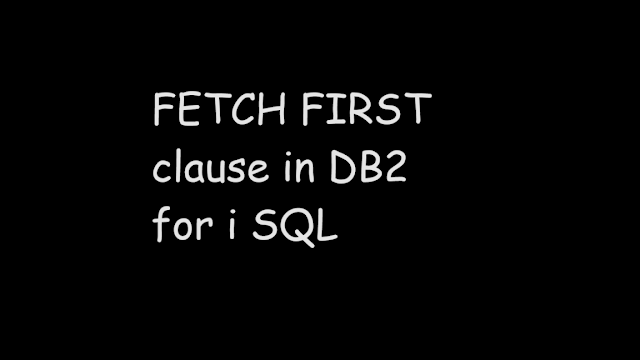 |
| FETCH FIRST clause in DB2 for i SQL |
FETCH FIRST clause is used to specify the number of rows to return in the SELECT statement.
Syntax using FETCH FIRST clause
SELECT column_name(s) FROM table_name ORDER BY column_name(s) FETCH FIRST number ROWS ONLY
Example #1: Select the first 2 records of the STUDENT table:
Refer STUDENT table from here.
Query:
SELECT * FROM Student FETCH FIRST 2 ROWS ONLY
Output:
ROLLNO NAME SUBJECTID
1 Ankur 201
2 Rahul 202
Example #2: Select the first 2 records of the STUDENT table where ROLLNO is greater than 2:
Refer STUDENT table from here.
Query:
SELECT * FROM Student where rollno > 2 FETCH FIRST 2 ROWS ONLY
Output:
ROLLNO NAME SUBJECTID
3 Raman 203
4 Vimal 204
Example #3: Select the first 2 records of the STUDENT table order by ROLLNO in descending order:
Refer STUDENT table from here.
Query:
SELECT * FROM Student order by rollno desc FETCH FIRST 2 ROWS ONLY
Output:
ROLLNO NAME SUBJECTID
5 Samar 290
4 Vimal 204
Example #4: Select the first record of the STUDENT table:
Refer STUDENT table from here.
Query: All below syntax are valid.
SELECT * FROM Student FETCH FIRST ROW ONLY
Or
SELECT * FROM Student FETCH FIRST ROWS ONLY
Or
SELECT * FROM Student FETCH FIRST 1 ROWS ONLY
Or
SELECT * FROM Student FETCH FIRST 1 ROW ONLY
Output:
ROLLNO NAME SUBJECTID
1 Ankur 201